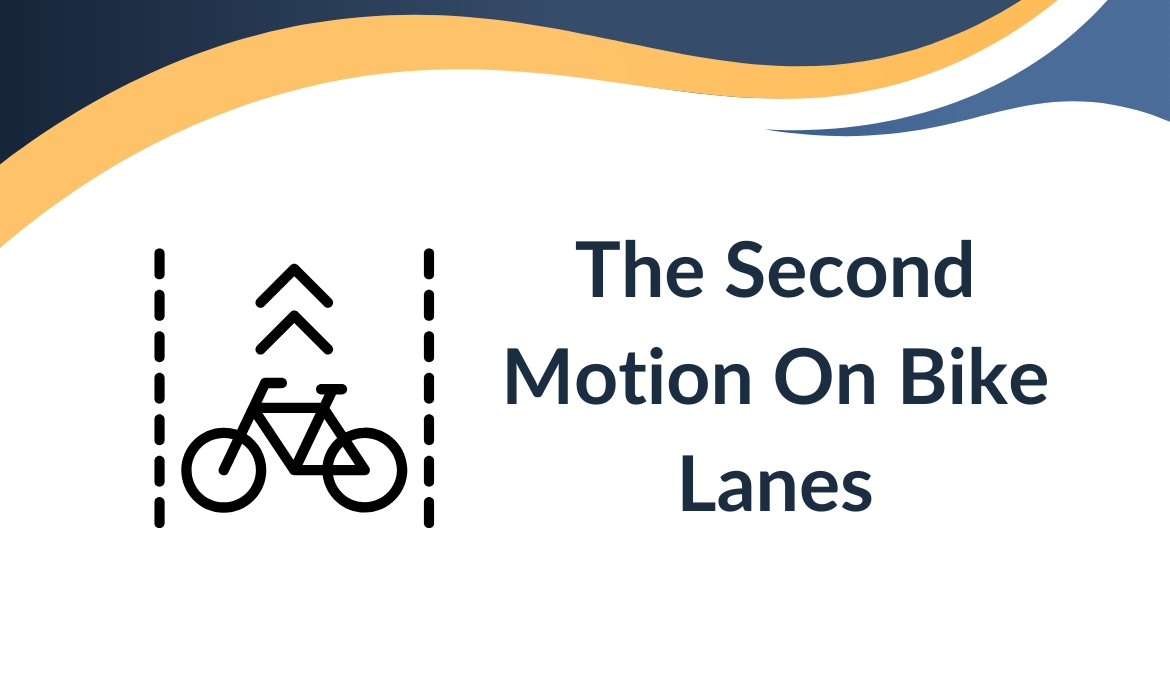The Second Motion on Bike Lanes
Following Mayor Fillmore's motion on bike lanes (I wrote about it here), Deputy Mayor Mancini presented Council with another motion on bike lanes to address the rising costs:
The Motion:
That Halifax Regional Council direct the Chief Administrative Officer to write a staff report of all AAA bike network capital projects defined in current the four year Capital Plan for years 2026-29.
The staff report will include:
1. A list of bike lane projects proposed in the fiscal years 2026-29 with their estimated budget requirement;
2. Assesses the feasibility of alternative network solutions that could reduce future costs; and
3. Provides opportunities for additional external funding sources.
Each item on the motion was voted on separately, but in the end, all of it passed. I voted in favor of all the items in the motion.
This motion was amended by Councillor White to include a fourth item, to ask that budgets for the bike lane projects over the next four years be broken down to include general traffic, public space (aka streetscaping), pedestrian and bike lane improvements. This is an important amendment, as the cost of the overall project is likely significantly more than the cost of just bike lane infrastructure. This item also passed.
Councillor White also asked for another item, which was to include a cost-benefit analysis of the AAA network. I voted in favor, and was disappointed it failed. In truth, I believe the necessity for alternate forms of transportation like bike lanes have not been articulated well by HRM, and I was hoping that this item would provide more information. As just one example, the provincial Minimum Planning Requirements in urban areas has removed parking requirements for dwellings, so new buildings may have no parking at all (see here).
I was also hoping this would pass, as it would present another opportunity to speak to some of the key concepts of the Integrated Mobility Plan, where some of the terms and ideas have not been accurately described lately. One term I have heard mis-represented is the concept of 'induced congestion', implying that if lanes are taken away, then congestion is induced. As a concept, that is not true. Induced congestion, a term borrowed from the economic term induced demand, refers to the phenomenon where road capacity expansions (like adding lanes) lead to increased traffic volume, often negating the initial congestion relief. Essentially, when roads become wider or new ones are built, more drivers are incentivized to use them, leading to a return to or even worsening of the previous congestion levels (see here).
The intent of Deputy Mayor Mancini's motion is quite different than the Mayor's (this motion addresses cost), and it granted Council the benefit of having a staff report for us to review in advance of voting on any changes. That report should be back by December, which will help inform the following budget season.
It is important to note that the cost of the AAA Bike Network is not new information. The cost of bike lanes are outlined in the Capital Budget (I wrote about it here), and all of council and the Mayor voted on both the draft capital plan, as well as ratifying the budget in April. What was new (to me) was the initial estimate, which, in 2020, was $25 million. Councillor Austin requested an information report on the AAA Bike Network, which was returned to the Transportation Standing Committee on May 22 (here), where the bike lane delivery information report highlighted the initial estimate vis-a-vis the new projected cost. The report does provide some high level reasons for the increase:
"Implementing an AAA facility often involves physical constraints that need to be addressed. These constraints can include the need for land acquisition, utility relocations, drainage, bus stop relocations, parking removals, impact to street trees, the relocation of retaining walls or other structures, traffic and bus route impacts, and the analysis and rerouting of truck and transit routes.
"...The initial program cost estimates are from 2020, as with all aspects of life the cost of the AAA program has increased significantly since that time. Factors including project complexity, inflation, labour shortages etc. are all contributing factors. The current estimate to complete the remaining segments of the AAA network is $77,000,000. The funding agreement sets out a maximum contribution from other levels of government of $20,832,500, of which $10,899,546 is remaining. That requires the Municipality to fund the remaining difference of $66,100,454."


